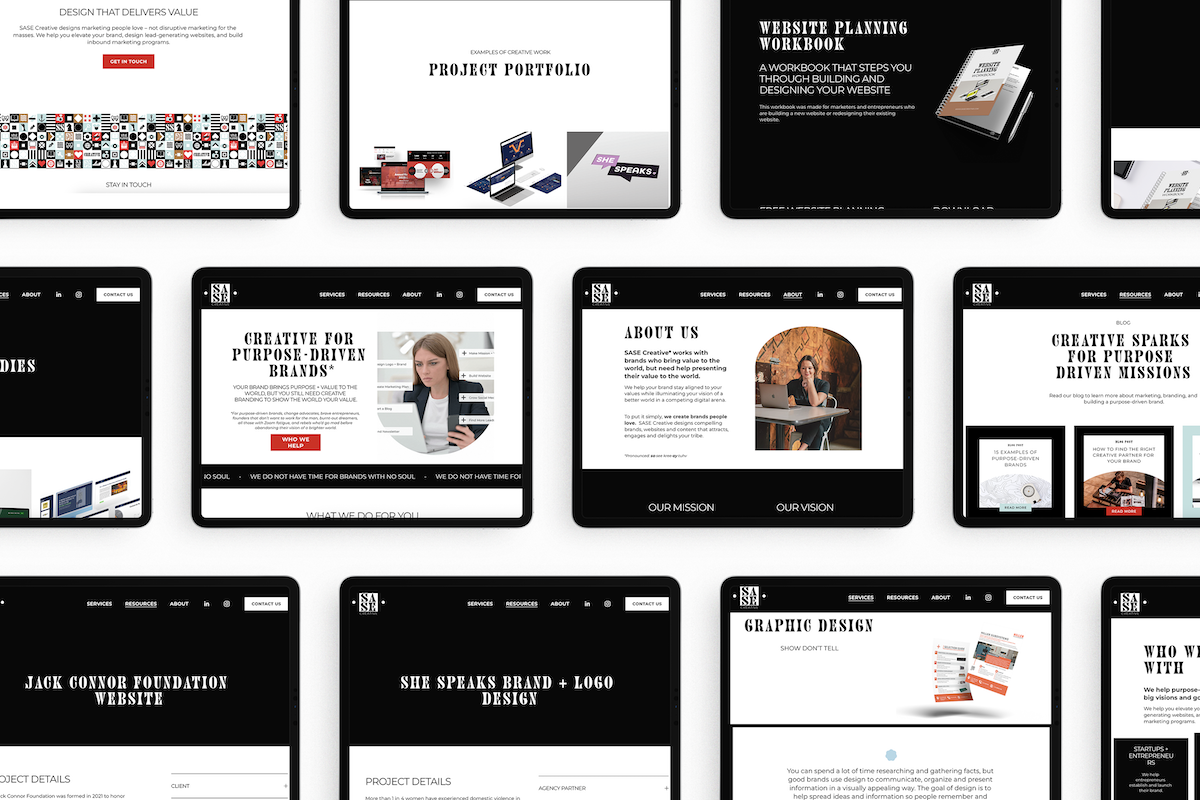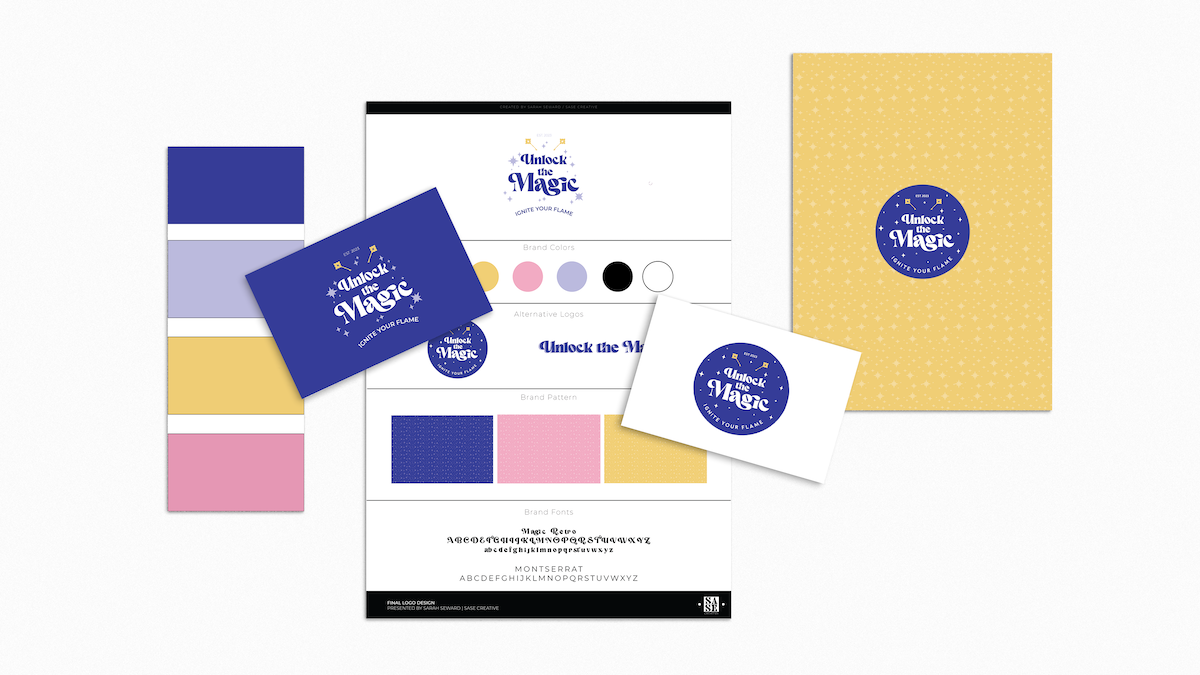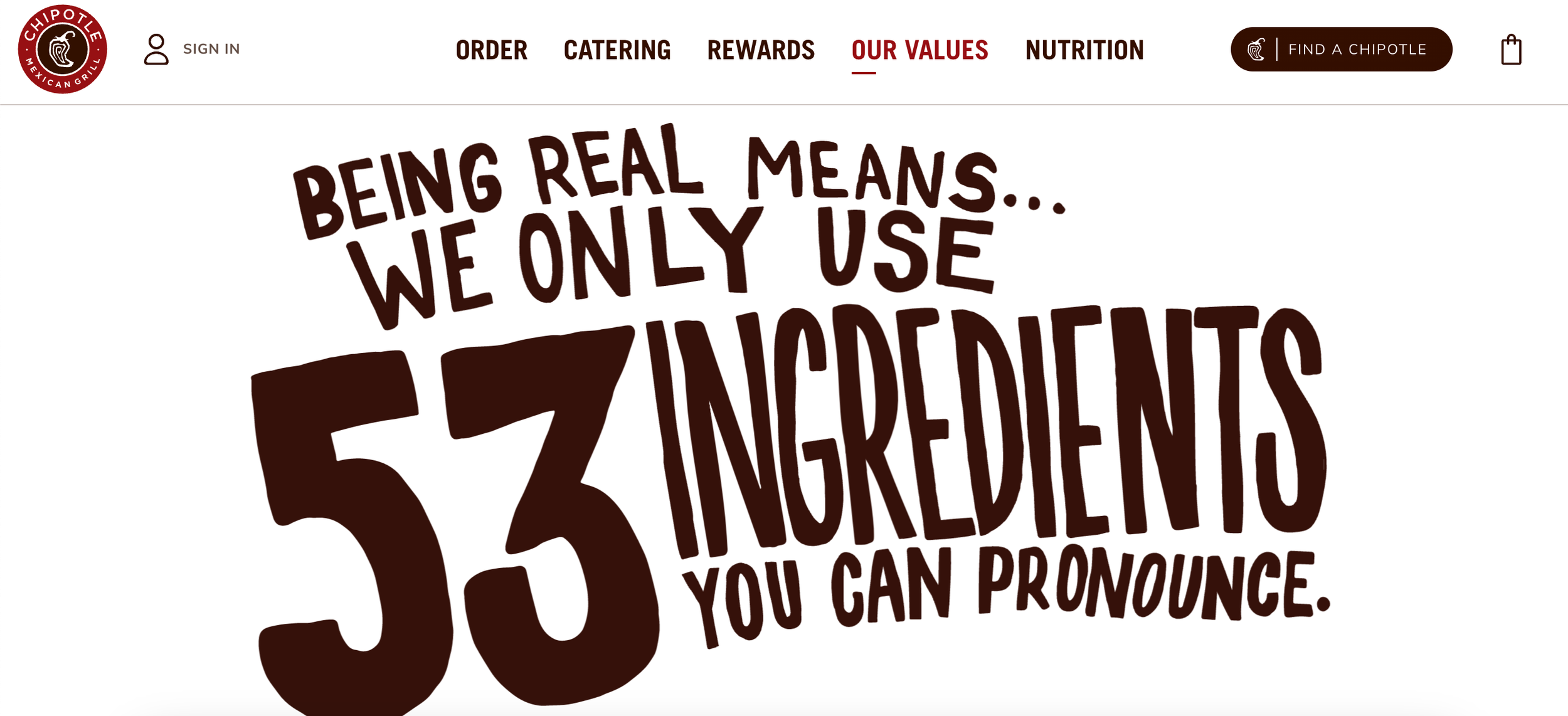Designing a Website that Represents Your Brand
7 Tips for Building a Website that Shows Your Brand’s Value to the World
As a solopreneur, I quickly discovered the power of a well-designed website for my own brand. My website was not an instant success in all honestly. You’re actually currently on the third version of my website, and I've been in business for less than two years. Creating this website took time, planning, and plenty of trial and error. Now, my website has consistent traffic and a steady flow of leads coming in.
Your website serves as a 24/7 sales representative for your brand, providing a platform for your audience to engage with your brand on a personal level. A well-designed website should not only attract your target audience but also encourage them to take action (like completing a form).
According to a research report by the Stanford Persuasive Technology Lab, 46.1% of people consider a website's design as the primary criterion for assessing a company's credibility. This statistic shows the significant role your website plays in your sales and marketing strategy.
Creating SASE Creative’s website took time, planning, and plenty of trial and error. But now, my website brings in consistent traffic and a steady flow of leads each month.
To enhance your brand's perception and attract your target audience, it’s crucial to build a website that accurately represents your brand's identity. Successful brands have realized the importance of constructing websites that align with their personality and values.
By designing a website that reflects your unique personality and values, you can establish an authentic and distinct online presence. As the initial point of contact for potential customers, your website serves as an information hub where visitors learn more about your products or services and form their initial impressions of your brand.
Here's why it's crucial to have a website that Embodies your brand:
It brings consistency: When your website reflects your branding, it creates a consistent look and feel that reinforces your brand's identity. This consistency helps your audience develop a sense of familiarity and trust, making it easier for them to connect with your brand on a deeper level.
It boosts brand recognition: Your website serves as a potent marketing tool that can significantly enhance brand recognition. By employing consistent branding across all your marketing channels, including your website, you create a more memorable and easily recognizable brand. This increased visibility can lead to better brand recall and a stronger presence in the minds of your target audience.
It establishes credibility: A well-designed website that accurately reflects your branding plays a vital role in building credibility and trust with your audience. By presenting a professional and cohesive image of your brand, you demonstrate to your visitors that you are a reputable and authoritative source in your industry. This credibility fosters trust and encourages your audience to engage with your brand more confidently.
It enhances user experience: Your website should be designed with your target audience in mind, and incorporating your branding helps create a more engaging and user-friendly experience. By consistently using your brand elements throughout your website, you provide a cohesive and familiar environment for visitors, making it easier for them to navigate, find information, and interact with your brand. A positive user experience not only keeps visitors on your site but also encourages them to take desired actions and become potential leads or customers.
By aligning your website design with your brand identity, you create an immersive and authentic experience that leaves a lasting impression on your audience.
After redesigning the Watts Change Agency brand, I added new brand colors, fonts, and graphic elements to the website.
Incorporating your brand into your website is essential for establishing a strong online presence and creating a cohesive brand identity. Here are some ways to incorporate your brand onto your website:
Stick to your brand guidelines
Use your brand's colors throughout your website, from the logo to the text and background colors. This will help establish a consistent visual identity that users will recognize.
I often see clients will start introducing new brand colors in blog or social graphics. You might think your just adding a fun new pop of color for the holidays or something, but really you are conflicting with the brand that you’ve worked so hard to build. If you find that your color palette doesn’t have enough colors, then add in new colors in a strategic way.
Include your logo
Place your logo prominently on your website, preferably in the top left corner of your homepage. This will make it easy for users to identify your brand and will create a strong visual association.
According to Nielsen Norman Group, web users spend 80% of their time viewing the left half of the page and 20% viewing the right half. This is why most websites put their logo on the top right corner of the website.
Also, note that you can use your logo too much. I also see a lot of brands make the mistake of using huge versions of their logo in marketing materials. Remember your customers love your brand because of the solution it provides, not because of how beautiful your logo looks blown up on a marketing flyer.
Here’s a website we created for the Jack Connor Foundation and you can see the logo is in the top left corner.
Use branded imagery
Use high-quality images that are consistent with your brand's visual identity, such as product photos or lifestyle shots that align with your brand's messaging. Want to stand out even more? Hire a photographer to take lifestyle photos for your website. It may seem like an unnecessary cost, but imagine how much of a better impact you can have on visitors with authentic pictures on your website.
I know that not all industries and brands have the time or resources for a photographer so they opt for stock photos. Be very selective when it comes to stock images. You don’t want users to know you used stock photos. You also don’t want to pick the same stock photos as all your competitors — which I see happen all the time.
Here’s an example of some brand images that I use for my own brand. These were taken by RN Freeman Photography.
Create branded content
By developing content that aligns with your brand's voice and messaging, you can effectively communicate your brand's values, expertise, and unique selling points to your audience. Whether it's through blog posts, videos, or social media feeds, incorporating this branded content into your website allows visitors to engage with your brand on a deeper level.
When you showcase your branded content on your website, you create a hub where visitors can easily access and explore the various facets of your brand. Blog posts can provide valuable insights and showcase your expertise, while videos can offer engaging visual storytelling. By integrating your social media feeds, you allow visitors to see real-time updates and interactions with your brand, further reinforcing its authenticity and relevance.
Watts Change Agency created that podcast, Watts of Change, as a way of creating brand content that reflected their mission and values.
Incorporate your brand's mission statement
I believe that every company website should include a space for its mission, vision, and values. While each website may vary, you can find space on your About Us page to detail your mission and vision. This serves as a powerful means to communicate your brand's principles and unique differentiators to your audience.
Utilize your brand's mission statement or tagline on your website to craft a succinct and coherent message that resonates with your brand's values. By integrating these elements into your website, you demonstrate that you are a purposeful brand, setting yourself apart from competitors
Patagonia uses its mission as its unique brand differentiator. As an outdoors brand, they exist to save the planet. When you visit Patagonia’s About Us page, it’s pretty clear what Patagonia exists to do.
Use a consistent brand voice
Your brand voice is the way you communicate with your customers, and it should reflect your brand's personality, values, and mission. Consider the tone, style, and language you want to use in your communications. This should be defined in the style guide you created in the steps above.
Ensure your website's language aligns with your brand's voice, using the same tone and messaging as your other marketing materials.
Chipotle is a great example of a brand voice that’s authentic. When you visit Chipotle’s website, the copy speaks right to you in a real and authentic way. Check out the Our Values page on Chipotle’s website.
When you visit Chipotle’s website, the copy speaks right to you in a real and authentic way.
Design a strong user experience
People are getting pickier when it comes to design. We spend so much time on social media apps that we’ve become used to a certain level of design and user experience. By creating a friendly experience for all users, you show that your brand is a solution to their problems.
For brands, that means you should make sure your website is easy to navigate, mobile-friendly, and visually appealing to create a positive user experience for all visitors.
After updating ASK Consulting’s website, I brought the new branding to their website to give them a brand refresh. If you’ve recently redesigned your logo, colors, or any part of your branding, you should think about updating your website as well.
I know building a website can be a challenge for most entrepreneurs and start-ups. That's why I've put together a free website planning workbook to help you through the process. You can download the workbook by clicking on the button below.
This workbook is designed to provide you with a structured approach to website development, guiding you through each step and helping you make informed decisions. It covers important aspects such as defining your goals, understanding your target audience, planning your website structure, designing the layout, and optimizing for user experience.
Interested in working with us to update your existing website? We would love to help you out. Get in touch with us today.









